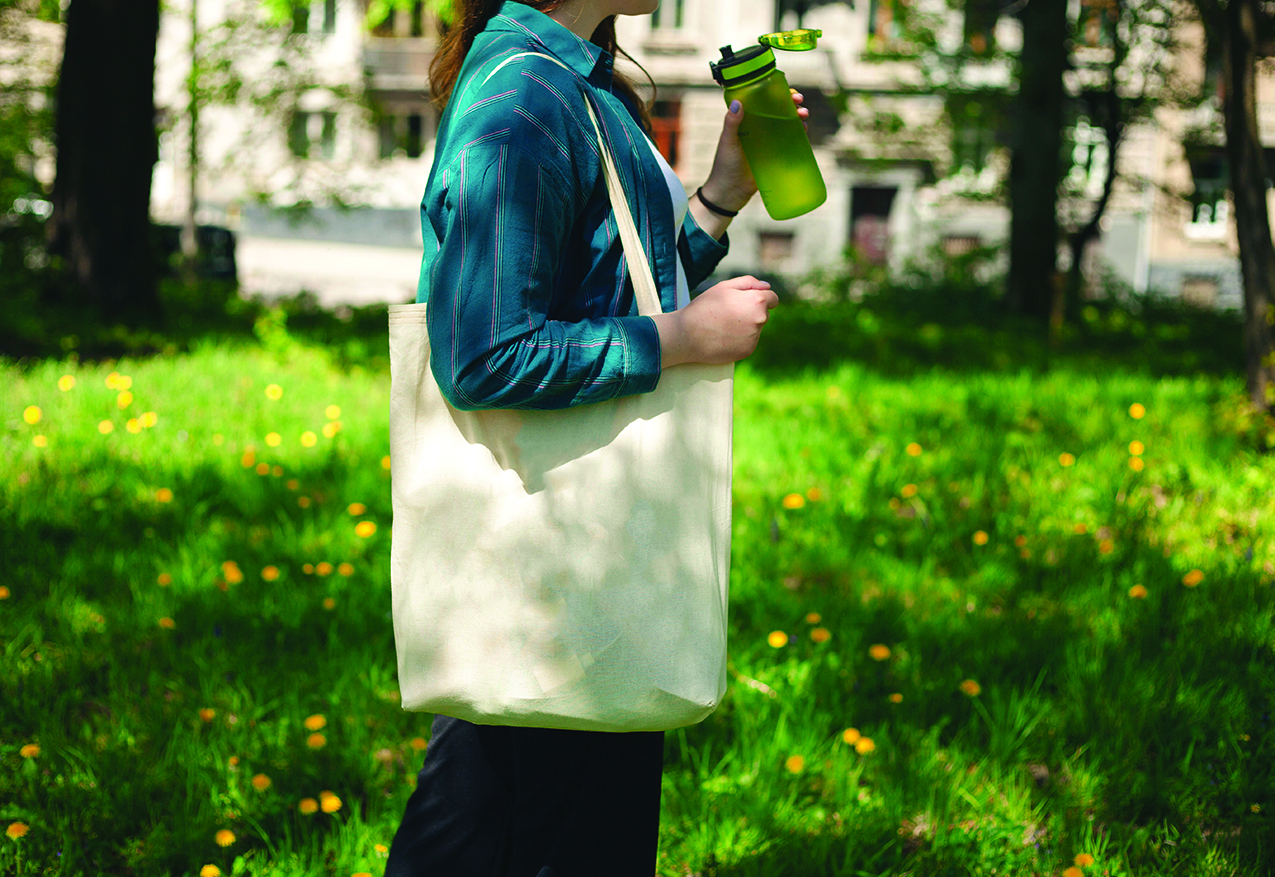HEALTHY LIVING
Managing cold, flu season

(Family Features) As temperatures drop, the risk of illness – including cold and flu – rises. It can be easy to mistake the flu for a common cold since many of the symptoms are the same, but muscle aches, cough, fever, headaches and sore throat are some of the more common signs you may be suffering from the flu, which tends to come on quicker than a cold.
In fact, a random, double-opt-in OnePoll survey of 2,005 Americans commissioned by Mucinex found sore throat pain to be one of the top three most debilitating symptoms along with fever and migraine.
While there’s no way to ensure you and your family members won’t get sick, there are steps you can take to reduce the chances.
Get a Flu Shot
The flu spreads differently than colds and can be transmitted before symptoms even arise. The Centers for Disease Control and Prevention recommends all people older than 6 months of age get the influenza vaccine, or flu shot, annually to help protect against the strains of flu expected to be the most common during the current flu season. The injection, which does not contain a live virus, goes into the arm muscle to generate antibodies that protect against future flu infection about two weeks after receiving the vaccine.
Practice Self-Care
While important year-round, maintaining regular self-care practices can go a long way toward maintaining your health during cold and flu season. Eating a well-balanced diet of fruits, vegetables and lean proteins can help strengthen your immune system, as can working out moderately each day. Regular exercise also helps reduce inflammation. In addition, proper hydration can help maintain many important body functions, and getting the National Sleep Foundation-recommended 7-9 hours of sleep can help keep antibodies strong and build a defense against illnesses.
Prepare for Symptoms
As one of the common symptoms of the flu, sore throat pain can flip your life upside down with the constant nagging, disruptive pain and irritation. However, 55% of those surveyed said they were likely to “power through” a sore throat and continue working, going to school and completing other tasks while dealing with sore throat pain. To make powering through easier, the Mucinex InstaSoothe line includes lozenges and sprays designed to numb, soothe and relieve sore throat pain.
“What separates these lozenges from others is they’re clinically proven to numb sore throat pain fast,” said Dr. Omid Mehdizadeh, MD, otolaryngology, and head and neck (ENT) surgeon. “Both lozenge varieties contain Hexylresorcinol, a local anesthetic for topical use on the mucous membranes of the throat and mouth. As a lozenge dissolves in the mouth, it starts to deliver a local ‘numbing’ anesthetic effect directly to the throat within seconds, lasting up to two hours. For those needing relief from a sore throat and cough, the Mucinex InstaSoothe Sore Throat + Cough Relief Lozenges also contain the active ingredient Dextromethorphan HBr to provide cough suppression.”
Stock Your Medicine Cabinet
Be ready before cold and flu hit your household. Take inventory of your medicine cabinet, get rid of any expired medicines and make note of any you need to replace and replenish. Make sure you have pain relievers, fever reducers, decongestants, antihistamines and cough syrups that can be used to help fight cold and flu symptoms. In addition, think about other supplies you may need to have on hand such as tissues, cough drops, hand sanitizer, anti-bacterial soap, a thermometer and a humidifier.
Disinfect Household Surfaces
Cold and flu viruses can live outside the human body on hard, non-porous surfaces such as metal, plastic and wood for hours, and sometimes even days. Regularly cleaning often-touched household surfaces such as doorknobs, light switches, remote controls, faucet handles and countertops with a disinfectant spray or wipe can help kill germs that cause the viruses. Look for Environmental Protection Agency-approved disinfectants containing bleach, alcohol, pine oil, sodium hypochlorite, citric acid, hydrogen peroxide or quaternary ammonium compounds for best results.
Remember Healthy Habits
One of the easiest ways to help avoid getting sick is to practice proper hygiene. Avoid touching your eyes, nose and mouth as much as possible, as these are areas where cold and flu germs can most easily gain entry into your system. Remember to cough and sneeze into a tissue or into your elbow if a tissue is not readily available. Frequently wash your hands with warm water and anti-bacterial soap for at least 20 seconds, especially after using the restroom, before eating and after touching surfaces in public places. A good rule of thumb is to sing “Happy Birthday” twice to judge the time. Using an alcohol-based hand sanitizer can also suffice when a sink isn’t within close proximity. Also avoid sharing items like utensils and cups, even with family members, to help avoid spreading germs.
Have a Plan for Sick Days
During cold and flu season, you or one of your family members may become ill and need to miss work or school. If you typically work in an office space, check to see if working remotely is possible and verify your office’s policies about sick time. Saving sick time or a couple vacation days for the season can help avoid having to take unpaid time off if you need to stay home for any reason. Also consider enlisting the help of friends or relatives to help with sick children in the event you’re unable to take time off from work, and coordinate with your children’s teachers to ensure your little ones receive any schoolwork they may have missed while home sick.
Find more self-care remedies and tips for managing cold and flu season at Mucinex.com.
Photos courtesy of Getty Images
SOURCE:
Mucinex
HEALTHY LIVING
How to conduct a skin care self-exam

Time spent soaking up the summer sun is one of the things that makes the season so appealing. Warm outdoor air has a calming effect that can make anyone feel more relaxed and comfortable.
As good as warm summer sun can feel, overexposure to the sun can be dangerous. The World Cancer Research Fund reports there were more than 330,000 new cases of skin cancer diagnosed across the globe in 2022. A significant percentage of skin cancer cases can be prevented, and prevention is a multifaceted process that includes skin care self-examinations. Self-exams do not take up much time, and individuals can speak with their physicians about how frequently they should check their skin for signs of skin cancer. The U.S. National Library of Medicine offers the following instructions for how to conduct a skin self-exam.
Choose the right time to examine your skin. The USNLM recommends conducting a skin exam after bathing. Women who routinely conduct breast self-exams can check their skin at this time as well.
Use a full-length mirror. ItÕs not always easy to examine skin throughout the body. But signs of skin problems can occur anywhere on the body, including areas that might be hard to see without help. If possible, conduct a self-exam of the skin in front of full-length mirror in a brightly lit room.
Identify what youÕre looking for. The USNLM notes you should be looking for any new skin markings. This includes bumps, moles, blemishes, and changes in skin color.
Pay close attention to preexisting moles. A potential sign of skin cancer includes moles that change over time. Examine preexisting moles to see if they have changed in size, texture, color, and shape.
Look for unusual moles. The USNLM characterizes certain moles as Òugly duckling moles.Ó These unique moles look and feel different from nearby moles and may be indicative of skin cancer. Speak with a dermatologist if a self-exam uncovers the presence of moles with uneven edges or differences in colors or asymmetric shapes. Moles that look different from one side to the other also should be brought to the attention of a dermatologist. Moles that do not stop bleeding or will not heal also merit examination by a skin care professional.
When the time comes to conduct the exam, the USNLM recommends following these steps:
- Look closely at your entire body, both front and back, in the mirror.
- Check under your arms and on both sides of each arm. Be sure to examine the backs of your upper arms, which can be hard to see.
- Bend your arms at the elbow, and examine both sides of your forearm.
- Examine the tops and palms of your hands.
- Examine the front and back of both legs.
- Examine your buttocks and between your buttocks.
- Examine your genital area.
- Examine your face, neck, the back of your neck, and scalp. Use both a hand mirror and full-length mirror, along with a comb, to see areas of your scalp.
- Examine your feet, including the soles and the spaces between your toes.
- Ask a person you trust to help examine hard-to-see areas.
Skin cancer poses a formidable threat, but many cases of the disease are preventable. Routine skin self-exams are a vital component of skin cancer prevention. TF256909
HEALTHY LIVING
What does 100% grass-fed organic dairy bring to your table

(Family Features) It’s no secret that many grocery store dairy sections are filled with more options today. One choice continuing to gain favor with consumers is 100% grass-fed organic dairy. Nutrition, environmental awareness and animal care are some of the leading reasons consumers choose grass-fed dairy products.
Globally, the 100% grass-fed dairy market is projected to continue growing and some market experts predict annual growth rates as high as 22%. If you’re curious about 100% grass-fed organic dairy, consider these benefits from Maple Hill, America’s original 100% grass-fed organic dairy producer. The pioneer of 100% grass-fed organic dairy took its commitment a step further by celebrating and declaring National 100% Grass-Fed Organic Dairy Day on April 15, which recognizes the positive impact it has on consumers, cows, farmers and the environment.
1. Honoring the Farmers
Unlike large-scale corporate dairy farms, most organic farms are small, family-owned operations dedicated to traditional, sustainable farming. Small dairy farms have been disappearing, but 100% grass-fed organic dairy creates a sustainable, viable path forward for farmers who work in harmony with nature.
This more natural approach to dairy is a “craft” process favoring small family farmers who are willing to dedicate the extra focus and patience to a better product and process. These family farms are passed on to future generations to grow the “better for you, better for the planet” approach.
2. Commitment to Good Health
Most consumers don’t know the difference between traditional organic and 100% grass-fed organic dairy. One key distinction is the products’ nutritional composition; 100% grass-fed organic dairy provides a 50% healthier ratio of omega 3:6 and 40% higher levels of CLA fatty acids, which may support heart health and provide other health benefits.
What’s more, Maple Hill’s products made with 100% grass-fed organic dairy are GMO free, hormone free and antibiotic free with no additives or fillers. The line of high-quality, rich-flavored products let you experience the organic difference from traditional dairy for a nutrient-dense solution that tastes as nature intended.
3. Happy, Healthy Cows
Cows on a 100% grass-fed diet can live up to three times as long as grain-fed cows and are never subjected to unnatural diets, hormones or antibiotics. More time in pastures filled with lush grass means cows have the freedom to roam, ruminate and graze on diverse, nutrient-rich grasses.
The result is happier, healthier cows, which in turn results in a richer, better-tasting and more nutrient-dense milk.
4. Sustainability and the Environment
Producing milk without grain or corn requires farmers to focus on regenerating soil and the soil life that supports everything else on the farm. In fact, the healthier the soil, the healthier the feed, so farmers have a natural incentive to be as regenerative as possible. Regenerative grazing practices are a powerful and positive tool to improve land and the web of life on farms by actively restoring soil health, promoting biodiversity and reducing the environmental impact compared to conventional dairy.
Well-managed grazing helps pull carbon from the atmosphere into the soil, fighting climate change in the process. In addition, healthier soil retains more water, reducing runoff and protecting water sources from agricultural pollution.
5. Strengthening the 100% Grass-Fed Organic Market
Consumers are increasingly aware of the choices they have in dairy products and how 100% grass-fed organic supports their health, farmers, animals and the planet. Some ways to support this category’s continued growth include choosing certified 100% grass-fed organic dairy, advocating for regenerative farming and helping shape a more sustainable food system.
Learn more about 100% grass-fed organic dairy products at maplehill.com.
SOURCE:
HEALTHY LIVING
Promote health with these daily habits

Health should be a priority, but too often life gets in the way and individuals take a reactive, rather than proactive, approach to their personal well-being. But living healthier need not be so difficult. In fact, research suggests that small, positive changes in how a person lives each day creates a healthier person over time.
A Hologic-Gallup survey on the state of women’s health conducted in April 2024 found 63 percent of respondents said it was hard for them to make health a priority. They cited feeling overwhelmed, needing to care for others before themselves, emotional/mental health, and work as the top barriers to focusing on health. But it’s important that both women and men recognize that small changes can add up to big results. These healthy habits can help individuals start living healthier lifestyles.
· Get some exercise. Regular physical activity is one of the most important things a person can do fo his or her health. Exercise helps manage weight, reduces the risk of disease, strengthens bones and muscles, and improves brain health. The Centers for Disease Control and Prevention says adults should aim for at least 150 minutes (30 minutes a day for five days) of moderate-intensity aerobic activity a week. A great place to begin is with a daily walk, which is a simple and effective habit that does not require a lot of time and no equipment except a good pair of athletic shoes.
· Wear sunscreen every day. After washing your face each morning, apply a facial moisturizer with an SPF of at least 30, or blend equal parts of sunscreen and regular moisturizer, suggests Harvard Health. Use it on the face, neck, ears, and any thinning hair spots on the scalp. Skin cancer is the most common type of the disease worldwide, and wearing sunscreen can help many people avoid it.
· Spend time outdoors. It takes just a few minutes in the sun to raise vitamin D levels. Vitamin D is necessary for bone and heart health and helps to boost mood, says WebMD. Various studies indicate spending time in green spaces promotes calm and increases happiness.
· Plan your meals. Meal planning is not just a way to manage food budgets. It’s also a great method to being more mindful of food choices and avoiding impulse buys or meals that may not be as healthy as they can be. Adding more plant-based foods to a diet is a good start. Such foods can reduce the risk of chronic conditions like high cholesterol and hypertension.
· Stay hydrated. Hydration supports good digestion, increases energy and may improve brain performance, states Harvard Health. Drink a glass of water each day upon waking up and with every meal. Older adults often do not feel thirst like they did when they were younger, so it is especially important for seniors to stay hydrated.
Healthy habits are more easily adopted when people begin small and make a daily commitment to their overall health.
-

 NEWS2 years ago
NEWS2 years ago2 hurt, 1 jailed after shooting incident north of Nocona
-

 NEWS2 years ago
NEWS2 years agoSuspect indicted, jailed in Tia Hutson murder
-

 NEWS2 years ago
NEWS2 years agoSO investigating possible murder/suicide
-

 NEWS2 years ago
NEWS2 years agoWreck takes the life of BHS teen, 16
-

 NEWS2 years ago
NEWS2 years agoMurder unsolved – 1 year later Tia Hutson’s family angry, frustrated with no arrest
-

 NEWS2 years ago
NEWS2 years agoSheriff’s office called out to infant’s death
-

 NEWS2 years ago
NEWS2 years agoBowie Police face three-hour standoff after possible domestic fight
-

 NEWS2 years ago
NEWS2 years agoDriver stopped by a man running into the street, robbed at knifepoint






